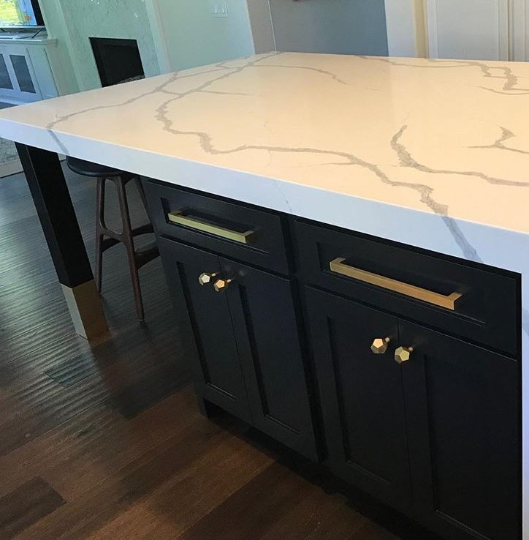Discover Affordable and Chic Solutions in Legs For Kitchen Island Updates
Discover Affordable and Chic Solutions in Legs For Kitchen Island Updates
Blog Article
A Guide to Selecting the Perfect Legs For Kitchen Island for Your Home
Picking the perfect legs for your kitchen island is a nuanced choice that influences both the capability and aesthetic allure of this main area. As you take into consideration these aspects, it becomes noticeable that the best legs can change not only the look of your kitchen area yet additionally its use for years to come.

Comprehending Kitchen Island Legs
When choosing legs for a kitchen island, it's necessary to comprehend their aesthetic and practical roles in the general design. The legs act as a vital support group, ensuring security and toughness for the island, which typically works as a work space, eating area, or gathering area. As a result, the option of product and construction method should be durable enough to endure everyday use and possible wear.
In enhancement to their architectural duties, legs contribute dramatically to the island's aesthetic allure. They can boost the kitchen area's style, whether with conventional, modern, or diverse styles. The elevation and proportion of the legs are also vital factors to consider; they must harmonize with the island's kitchen counter height while making certain comfy seating for those using the space.
Additionally, the leg layout can affect the overall circulation of the cooking area. Open, airy leg styles can produce a feeling of lightness, while strong, significant legs might share a much more grounded and secure aesthetic - Legs For Kitchen Island. Recognizing these visual and useful elements will assist home owners in making educated selections that enhance their kitchen area's style and boost its functionality
Popular Styles and Products
The selection of legs for a cooking area island includes a variety of popular designs and products, each offering one-of-a-kind qualities that can boost both functionality and visual appeals. Traditional legs commonly display ornate details and craftsmanship, enhancing traditional kitchen layouts.
:max_bytes(150000):strip_icc()/pink-marble-tile_House-of-Harvee-9f030193ae38484a9cb7ea2d71af66f4.jpg)
Height and Security Factors To Consider

Security is one more essential consideration. The legs of the cooking area island must offer adequate assistance, making certain that the framework can endure daily usage without shifting or wobbling. Product selection plays a considerable duty in stability; steel legs, for example, often tend to offer greater toughness contrasted to wood. Furthermore, ensuring that the island is securely anchored to the floor or wall can boost stability, particularly for bigger islands that may birth significant weight.
Matching Your Kitchen Visual
Choosing the appropriate legs for your kitchen area island exceeds performance; it likewise plays a considerable duty in the total aesthetic of the area. When selecting legs, think about the design style of your kitchen area. For a contemporary look, smooth metal or minimal styles can develop a clean, modern vibe. On the other hand, standard or rustic cooking areas frequently gain from wooden legs with intricate describing or a distressed surface, boosting warmth and personality.
Legs that enhance or contrast with your island's surface look at this website area and surrounding kitchen cabinetry can create visual consistency or striking focal points. Furthermore, consider the surface of the legs; matte, glossy, or distinctive surfaces can significantly affect the total feel of the cooking area.
Installation and Maintenance Tips
Installing kitchen island legs calls for careful attention to information to make sure both security and visual charm. Utilize a stud finder to find wall studs if you are connecting the legs to a wall or utilizing braces for added support.
When safeguarding the legs, utilize premium screws and, if required, timber glue for added stamina. For steel legs, guarantee that you are making use of proper supports and tools to avoid damages to your floor covering. It is recommended to look for levelness after installation, making changes as needed to prevent wobbling.
Tidy the legs this hyperlink with an ideal cleaner, avoiding rough products that may damage the surface. By complying with these setup and upkeep ideas, you can ensure that your kitchen area island legs remain both useful and visually you could try these out enticing.
Verdict
To conclude, choosing the appropriate legs for a cooking area island requires mindful consideration of height, stability, and visual compatibility. By choosing ideal materials and styles that line up with the overall kitchen style, functionality can be improved while maintaining visual allure. Appropriate installation and ongoing maintenance even more add to the toughness and longevity of the kitchen island. Inevitably, thoughtful leg choice plays a vital function in raising both the practicality and design of the cooking area room.
When selecting legs for a kitchen island, it's necessary to recognize their functional and visual roles in the total layout. Open, airy leg styles can create a sense of lightness, while strong, significant legs might share a more grounded and stable aesthetic. The legs of the cooking area island should give adequate assistance, making sure that the structure can withstand everyday use without moving or wobbling.Installing cooking area island legs requires mindful interest to detail to ensure both stability and visual appeal.In conclusion, choosing the appropriate legs for a cooking area island requires cautious factor to consider of height, security, and visual compatibility.
Report this page